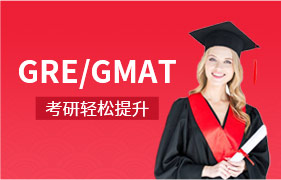备考雅思阅读模拟实战试题(2-1)
2013/03/0202:00关键词:备考雅思阅读模拟实战试题(2-1)
- 字体:
- 大
- 中
- 小
北京新航道小编根据老师介绍为同学们整理了一些备考材料。另外提示大家:在雅思阅读的备考过程中,针对阅读文章话题的归类是很有必要的,这能为我们节省谢谢题海战所浪费的时间。下面为同学们介绍的备考内容,希望对大家有所帮助。
Rogue theory of smell gets a boost
Published online: 6 December 2006
Rogue theory of smell gets a boost
1.A controversial theory of how we smell,which claims that our fine sense of odour depends on quantum mechanics,has been given the thumbs up by a team of physicists.
2.Calculations by researchers at University College London (UCL) show that the idea that we smell odour molecules by sensing their molecular vibrations makes sense in terms of the physics involved.
3.That's still some way from proving that the theory,proposed in the mid-1990s by biophysicist Luca Turin,is correct.But it should make other scientists take the idea more seriously.
4."This is a big step forward," says Turin,who has now set up his own perfume company Flexitral in Virginia.He says that since he published his theory,"it has been ignored rather than criticized."
5.Most scientists have assumed that our sense of smell depends on receptors in the nose detecting the shape of incoming molecules,which triggers a signal to the brain.This molecular 'lock and key' process is thought to lie behind a wide range of the body's detection systems: it is how some parts of the immune system recognise invaders,for example,and how the tongue recognizes some tastes.
6.But Turin argued that smell doesn't seem to fit this picture very well.Molecules that look almost identical can smell very different — such as alcohols,which smell like spirits,and thiols,which smell like rotten eggs.And molecules with very different structures can smell similar.Most strikingly,some molecules can smell different — to animals,if not necessarily to humans — simply because they contain different isotopes (atoms that are chemically identical but have a different mass).
7.Turin's explanation for these smelly facts invokes the idea that the smell signal in olfactory receptor proteins is triggered not by an odour molecule's shape,but by its vibrations,which can enourage an electron to jump between two parts of the receptor in a quantum-mechanical process called tunnelling.This electron movement could initiate the smell signal being sent to the brain.
8.This would explain why isotopes can smell different: their vibration frequencies are changed if the atoms are heavier.Turin's mechanism,says Marshall Stoneham of the UCL team,is more like swipe-card identification than a key fitting a lock.
9.Vibration-assisted electron tunnelling can undoubtedly occur — it is used in an experimental technique for measuring molecular vibrations."The question is whether this is possible in the nose," says Stoneham's colleague,Andrew Horsfield.
10.Stoneham says that when he first heard about Turin's idea,while Turin was himself based at UCL,"I didn't believe it".But,he adds,"because it was an interesting idea,I thought I should prove it couldn't work.I did some simple calculations,and only then began to feel Luca could be right." Now Stoneham and his co-workers have done the job more thoroughly,in a paper soon to be published in Physical Review Letters.
11.The UCL team calculated the rates of electron hopping in a nose receptor that has an odorant molecule bound to it.This rate depends on various properties of the biomolecular system that are not known,but the researchers could estimate these parameters based on typical values for molecules of this sort.
12.The key issue is whether the hopping rate with the odorant in place is significantly greater than that without it.The calculations show that it is — which means that odour identification in this way seems theoretically possible.
13.But Horsfield stresses that that's different from a proof of Turin's idea."So far things look plausible,but we need proper experimental verification.We're beginning to think about what experiments could be performed."
14.Meanwhile,Turin is pressing ahead with his hypothesis."At Flexitral we have been designing odorants exclusively on the basis of their computed vibrations," he says."Our success rate at odorant discovery is two orders of magnitude better than the competition." At the very least,he is putting his money where his nose is.
(668 words Nature)
Questions 1-4
Do the following statements agree with the information given in the passage? Please write
TRUE if the statement agrees with the writer
FALSE if the statement does not agree with the writer
NOT GIVEN if there is no information about this in the passage
1.The result of the study at UCL agrees with Turin’s theory.
2.The study at UCL could conclusively prove what Luca Turin has hypothesized.
3.Turin left his post at UCL and started his own business because his theory was ignored.
4.The molecules of alcohols and those of thiols look alike.
Questions 5-9
Complete the sentences below with words from the passage. Use NO MORE THAN THREE WORDS for each answer.
5.The hypothesis that we smell by sensing the molecular vibration was made by ______.
6.Turin’s company is based in ______.
7.Most scientists believed that our nose works in the same way as our ______.
8.Different isotopes can smell different when ______ weigh differently.
9.According to Audrew Horsfield, it is still to be proved that ______ could really occur in human nose.
Question 10-12
Answer the questions below using NO MORE THAN THREE WORDS from the passage for each answer.
10.What’s the name of the researcher who collaborated with Stoneham?
11.What is the next step of the UCL team’s study?
12.What is the theoretical basis in designing odorants in Turin’s company?
以上就是北京新航道雅思专题小编结合“雅思梦之队”老师的介绍,为同学们整理的雅思阅读相关内容了,希望大家仔细阅读并有所帮助。最后,预祝各位烤鸭喜获佳绩!
点击了解北京雅思培训信息

热报课程推荐
- 雅思OMO基础6分班(A+B) 15/01
- 雅思OMO精讲6分班(B) 15/01
- 雅思OMO基础6.5分班(A+B+C) 15/01
- 雅思OMO精讲6.5分班(B+C) 14/07
- 雅思OMO强化6.5分班(C) 14/07
名师博文
- 王老师:突破雅思小作文(一) 17/11
- 李老师:雅思写作中考官范文真的都那么完美无缺吗 17/11
- 李老师:简单三步,升级雅思图表作文的表达(动态图篇) 17/11
- 邸老师:浅谈雅思阅读结课后的备考策略 17/10
- 徐老师:雅思阅读如何选取关键词 17/10
小编热推
- 雅思口语范文欣赏:一种你喜欢的运动 12/12
- 剑桥雅思真题(4-11):小标题题(List of Headings) 17/05
- 剑5中的雅思阅读真题解析 13/02
- 狼人杀里的专业术语用英文怎么说 17/08
- 雅思口语考试流程一览 13/09








